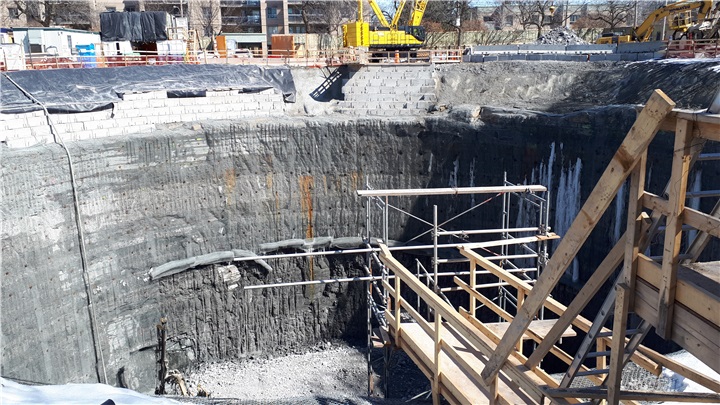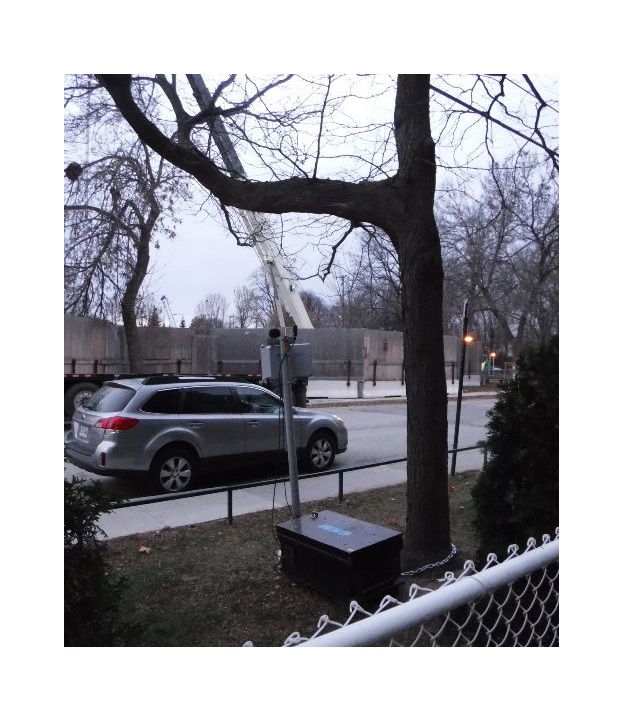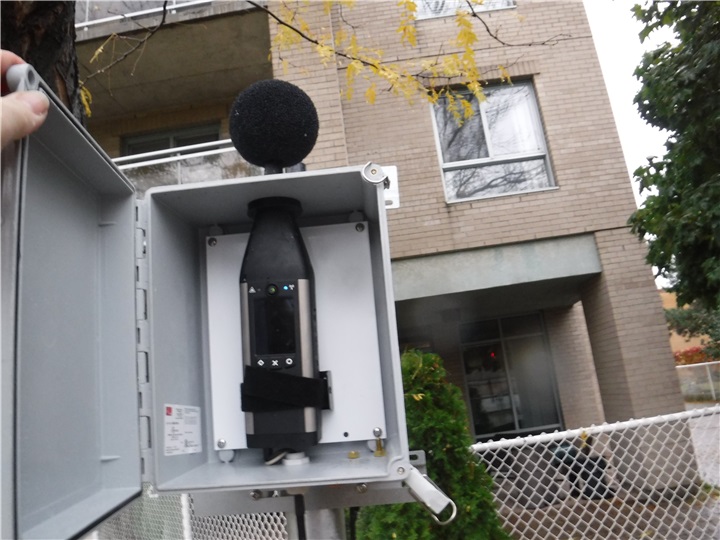Sound and vibration monitoring of a flood retention basin | Lavigne Basin
MONTREAL
Download PDFThis retention basin will be built under the Lefebvre Park at the intersection of Chemin Somerset and Laurin and Cousineau Streets in the Ahuntsic-Cartierville borough near Montreal. The purpose of this project is to connect the new basin to the existing wastewater system. Three pipes totaling almost 1.8 km will be installed at a depth of more than 15 meters. The project involves several phases. Phase 1 was completed in 2019 while Phase 2 began in October 2020.
The complex operations required for this retention basin project can generate significant noise and ground vibrations that may be heard and felt in nearby homes. Since 2020, GKM Consultants has been providing Lavigne Basin project workers with Class I sound level meters and fully automated seismographs that facilitate the monitoring of project phases and blasting. As a result of the installation of surveillance systems, project stakeholders are now able to react quickly and anticipate citizens’ concerns when an event is detected.
GKM installed sound level meters and geophones to cover the entire project perimeter. The equipment is located mainly in residences. The installed systems take continuous measurements and transfer data via cellular modems to GKM’s secure servers. The acquisition systems can also allow mine managers to react quickly when established thresholds are exceeded.
GKM assists Coffrage Alliance in obtaining a detailed understanding of seismic and noise event behaviour by working closely with them to produce specialized reports. Coffrage Alliance transmits blasting data to GKM so this information can be correlated with the measurements recorded by the noise and vibration monitoring instruments.
These instruments record the velocity of the seismic wave in mm/s and the sound in dBA. The maximum wave level in mm/s over a given period of time (PPV) is used as an indicator. Noise thresholds were determined when GKM carried out a series of ambient noise measurements prior to the start of the work.
When a vibration level exceeds the threshold, a high-frequency signal acquisition is triggered. A frequency analysis is then performed on this signal to determine the dominant frequency (Df) of the seismic wave. The PPV and Df for each geophone axis are compared to the USBM recommendations and presented as a compliance table for each measuring station. The recorded noise measurements are integrated over a period of 30 min with a weighting (A).
Over several years, GKM has developed solid expertise with respect to real-time monitoring applications accessible on the Internet. The data management system can be installed and configured directly on a customer’s server or simply hosted at the GKM Consultants’ Data Centre for remote access.
GKM Consultants reiterates its commitment to contributing to this project by implementing measures aimed at preventing damage to residences, structures, and adjacent infrastructure.




